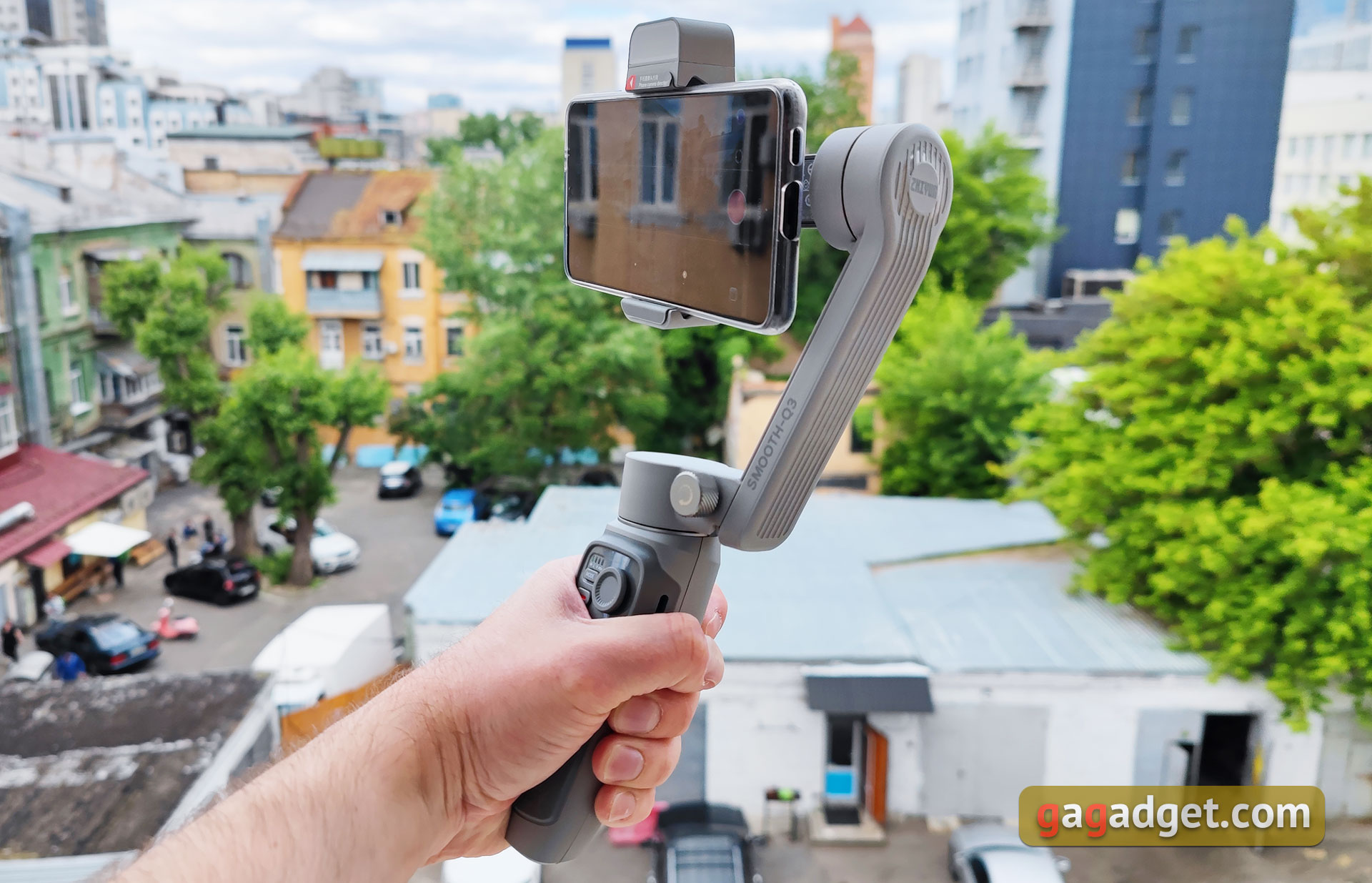
</ img>
Along with the rapid growth in the number of mommy bloggers of various calibers, stabilizers for smartphones have become
Zhiyun Smooth Q3
Budget handheld gimbal for smartphones
3-axis foldable compact stabilizer forwork with smartphones. Equipped with built-in LED backlighting, it can work with almost all modern smartphones of any size and weight. Supports the function of tracking the object in the frame
Zhiyun Smooth Q3
Zhiyun Smooth Q3 Combo
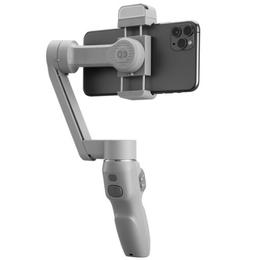
Selfie stick upgrade
</ img>
4 reasons to buy Zhiyun Smooth Q3:
- does an excellent job with stabilization;
- convenient folding design and pleasant appearance;
- built-in rotary LED backlight;
- compatible with smartphones of almost any size and weight.
2 reasons not to buy Zhiyun Smooth Q3:
- there is no support for all video modes that a smartphone offers, it works only with the main camera;
- the branded app is crude and requires registration.
- What is included?
- How does the Zhiyun Smooth Q3 look and feel?
- How convenient is it to manage and use?
- How does he behave in work and shoot?
- In the dry residue
What is included?

</ img>

</ img>


Zhiyun Smooth Q3 comes in two configurations.The youngest came to us. The box contains the stabilizer itself, a removable tripod, a USB Type-C cable for charging and documentation. The Combo package additionally includes a wrist strap, a hard case for transportation and a Zhiyun Prime card. Considering the relatively small difference in cost, the Combo looks more interesting, primarily due to the case.
</ p>How does the Zhiyun Smooth Q3 look and feel?

</ img>
Zhiyun Smooth Q3 - three-axis stabilizer withfolding compact design. It is made primarily of matte plastic with rubberized inserts and important structural elements made of metal. The color, apparently, was picked up from DJI: the stabilizer is light gray. It looks nice, but gets dirty quickly. Structurally, the Steadicam is significantly different from what we saw in the above-mentioned DJI. The upper part with the holder does not fold out, but “moves out” into working condition along a kind of rail and is clamped with a metal bolt for reliability. It is important to remember that you need to extend it all the way, otherwise the Steadicam will not start.
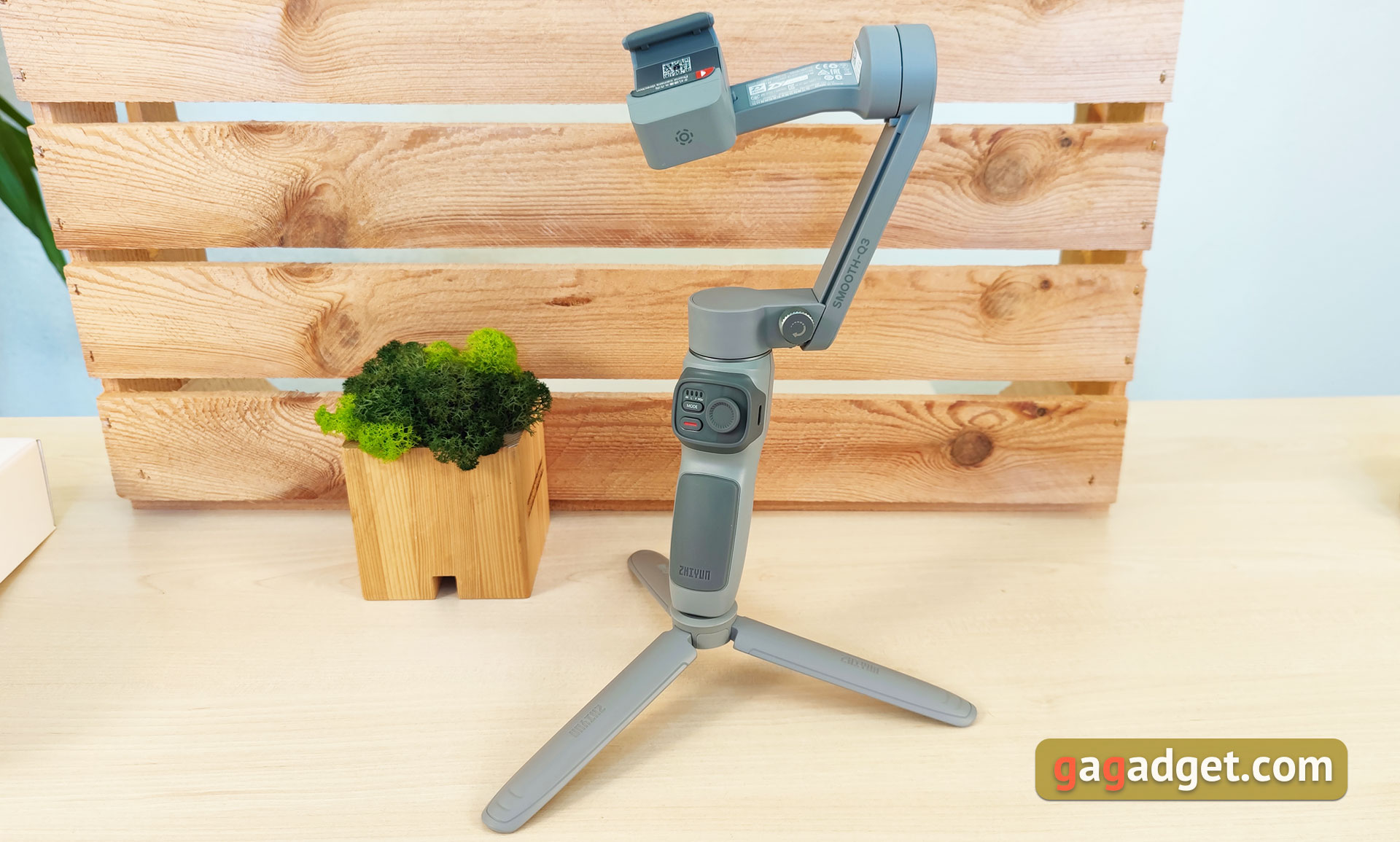
</ img>

</ img>


Non-removable sliding smartphone mount.It has an indicator of the correct direction of the smartphone camera. The range of the supported width of the smartphone (as well as the weight) turned out to be impressive: from 55 to 90 mm. Zhiyun Smooth Q3 coped with the giant Xiaomi Mi 11 Ultra without any problems. But the fun doesn't end there. On the same mount is one of the stabilizer chips: a rotatable LED backlight with three brightness levels. A touch button is provided to turn on and select the intensity.
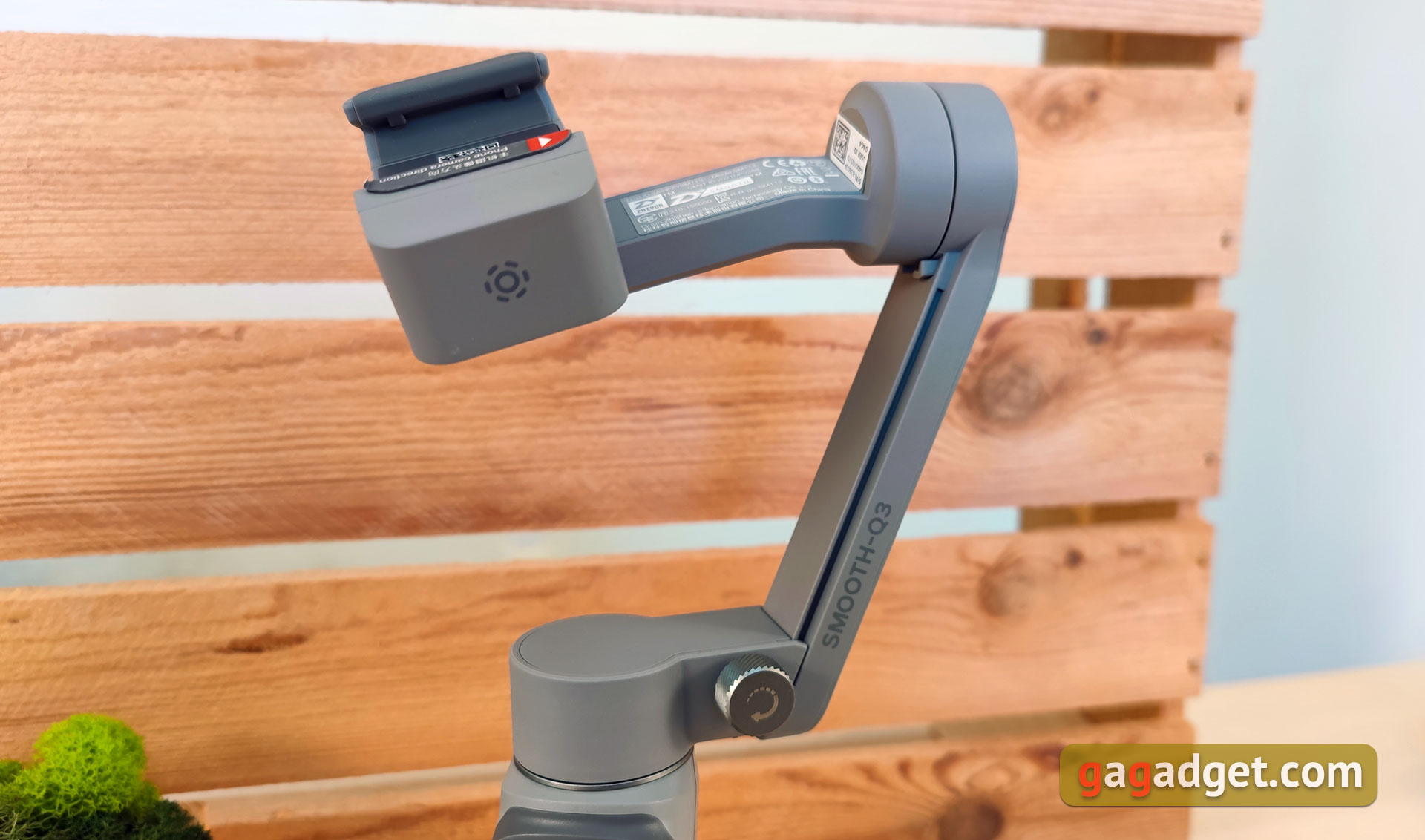
</ img>
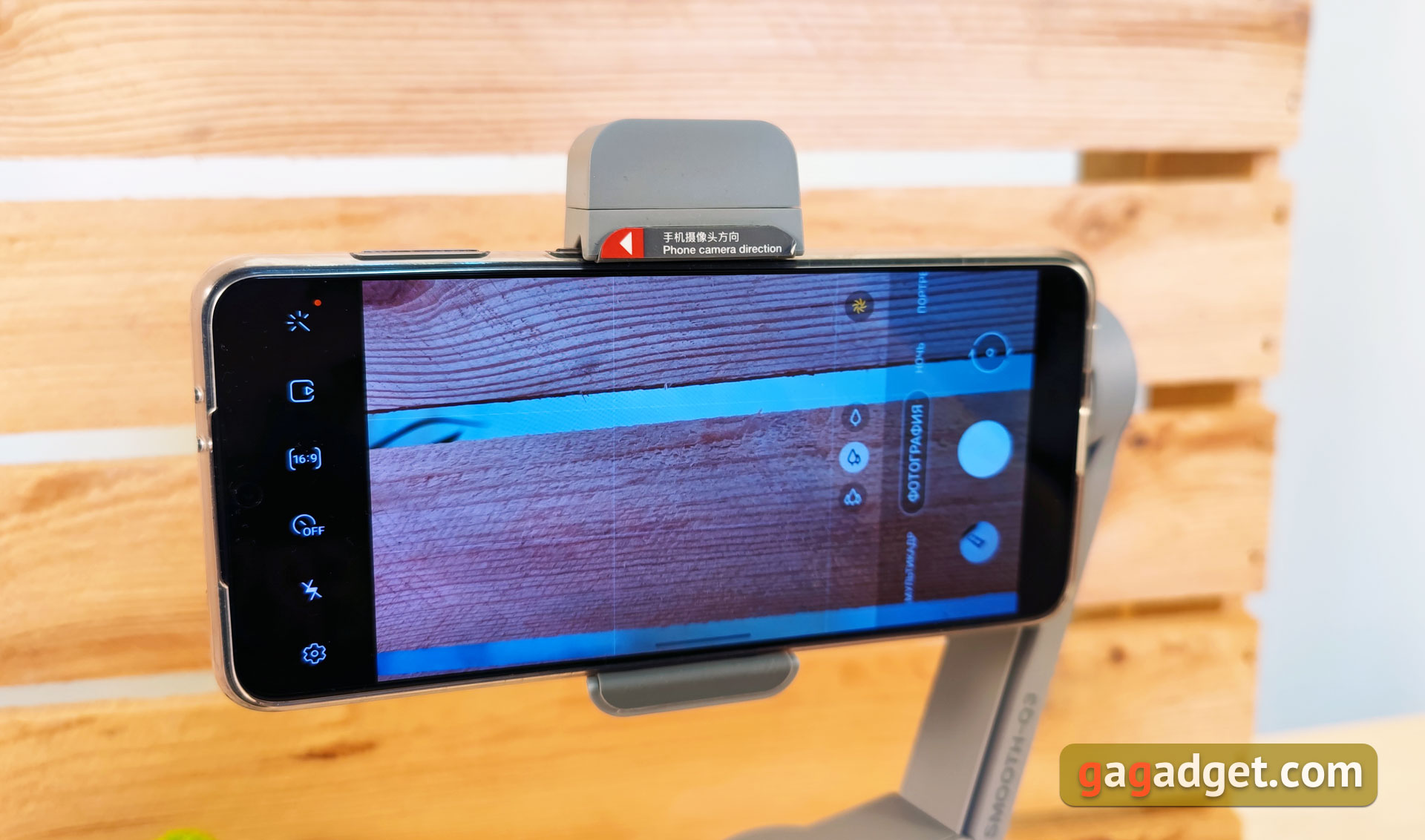
</ img>

</ img>

</ img>
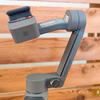
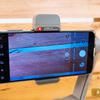
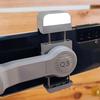

On a panel that is directed towards the user,there is a shooting button, a mode switch button, a joystick and four LEDs. They are responsible both for indicating the current operating mode of the stabilizer and for the charge level.

</ img>
On the left, on the side panel there is a sliderZuma. It is not the most comfortable: the location is generally logical, but reaching it with your thumb is not so easy. It takes some getting used to. On the opposite side there is a USB Type-C connector for charging.

</ img>
There are two buttons on the front of the handle. Power and multifunction button. Which, in particular, starts tracking an object in the frame.

</ img>
The bottom of the Zhiyun Smooth Q3 grip hasthe ability to attach a wrist strap and a standard tripod thread. A complete folding tripod is screwed to it if necessary, although any other can be used.

</ img>

</ img>


Most modern 3-axis stabilizersfor smartphones are quite similar in design, with minor differences. In the case of Zhiyun Smooth Q3, this is a retractable “rail” instead of a folding “knee” and the presence of a built-in rotating LED backlight. During use there were no surprises or complaints. The Zhiyun Smooth Q3 feels quite sturdy and reliable.

</ img>
How convenient is it to manage and use?
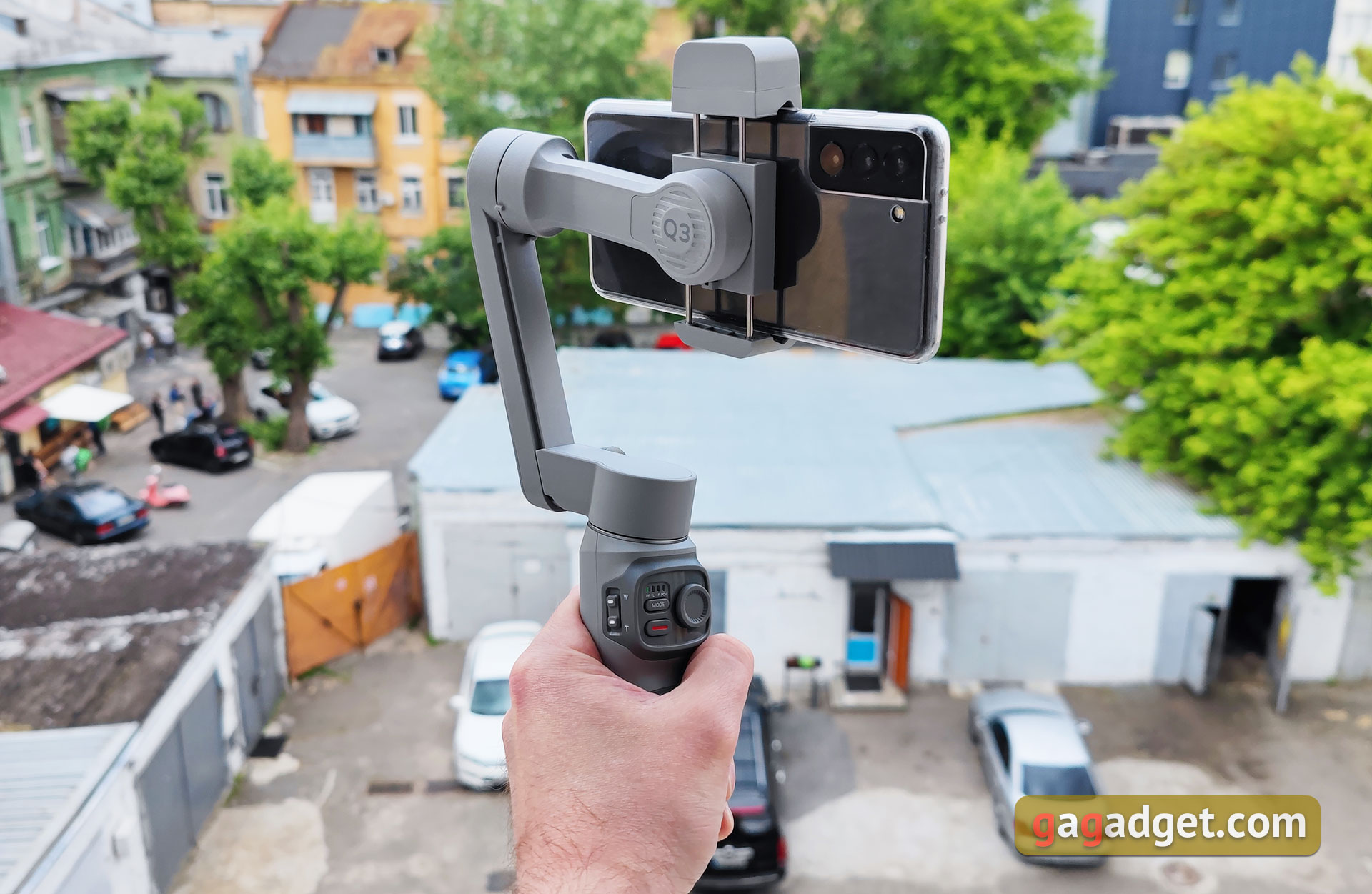
</ img>
No special features or complicationsSteadicam does not have any connection or use. Everything is the same as in other similar models: unfold and insert the smartphone into the sliding holder. It has an arrow with the desired direction of the smartphone camera. Next, we balance the smartphone and turn on the stabilizer. By and large, the Zhiyun Smooth-Q3 can be used solely as a stabilizer without a proprietary application. But in this case, all additional functions will not be available. We'll talk about this in more detail a little later, but for now let's look at the physical controls.
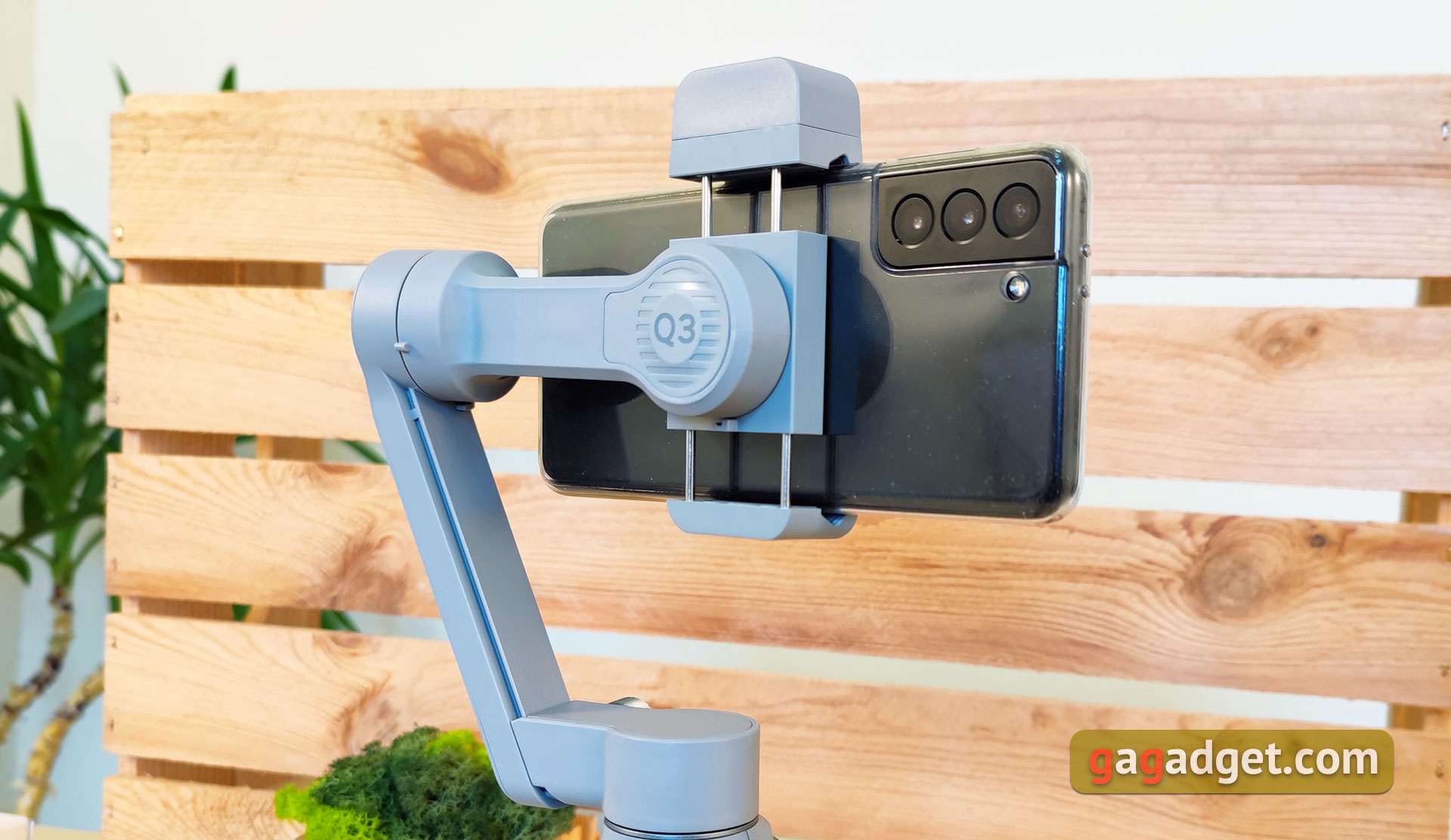
</ img>
On the user-facing panel there isthe above-mentioned LEDs, which notify about the selected mode of operation of the stabilizer. These are: Pan Tracking Mode (PF), Locking Mode (L), Tracking Mode (F), First Person View (POV) Mode, Vortex Mode (V) and PhoneGo Mode (GO). They are switched with the Mode button. Below is the record button, and next to it is the joystick.
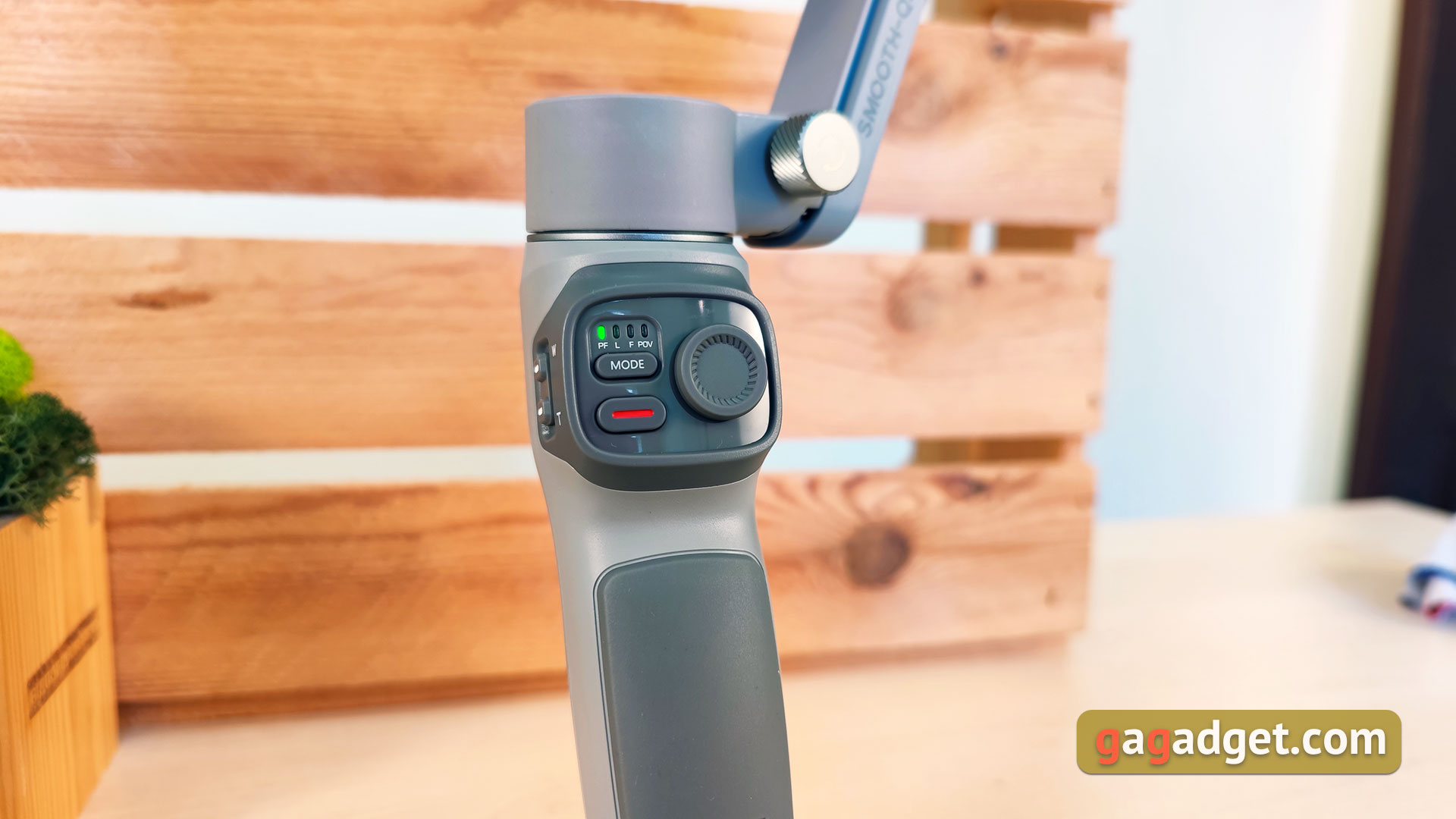
</ img>
On the opposite side there are two buttons.They practically do not protrude above the handle. And initially there was a suspicion that I would miss. But, fortunately, their location turned out to be quite successful and there were no false presses on the wrong button. When you press the power button once, the LED indicators show the charge level. To turn it on/off, you need to hold down the button for 3 seconds. For 8 seconds - Bluetooth settings are reset. The big key is much more interesting. It performs several functions at once. Starts tracking an object in the frame (one press), centers the frame position (two presses), and switches between portrait and landscape modes (three presses). And if you hold it down, the stabilizer goes into PhoneGo mode. In this mode, the camera tilts and pans following the movement of the gimbal, while the pan axis is locked and the joystick is disabled.

</ img>
Now let's move on to the problem partstabilizer - its proprietary application. It's called ZY Cami and is available on Android and iOS. There is no localization, which is generally not a problem, but worth mentioning. The first thing that was a little annoying: to pair your smartphone with the stabilizer for the first time, the application requires you to register your own account. Further, the application can be divided into two parts. The first part consists of promotional materials, instructions, videos uploaded by users, a simple editor and ready-made templates for videos. The branded service even has such a thing as a premium subscription, Zhiyun Prime. It gives access to additional templates, filters, and so on.
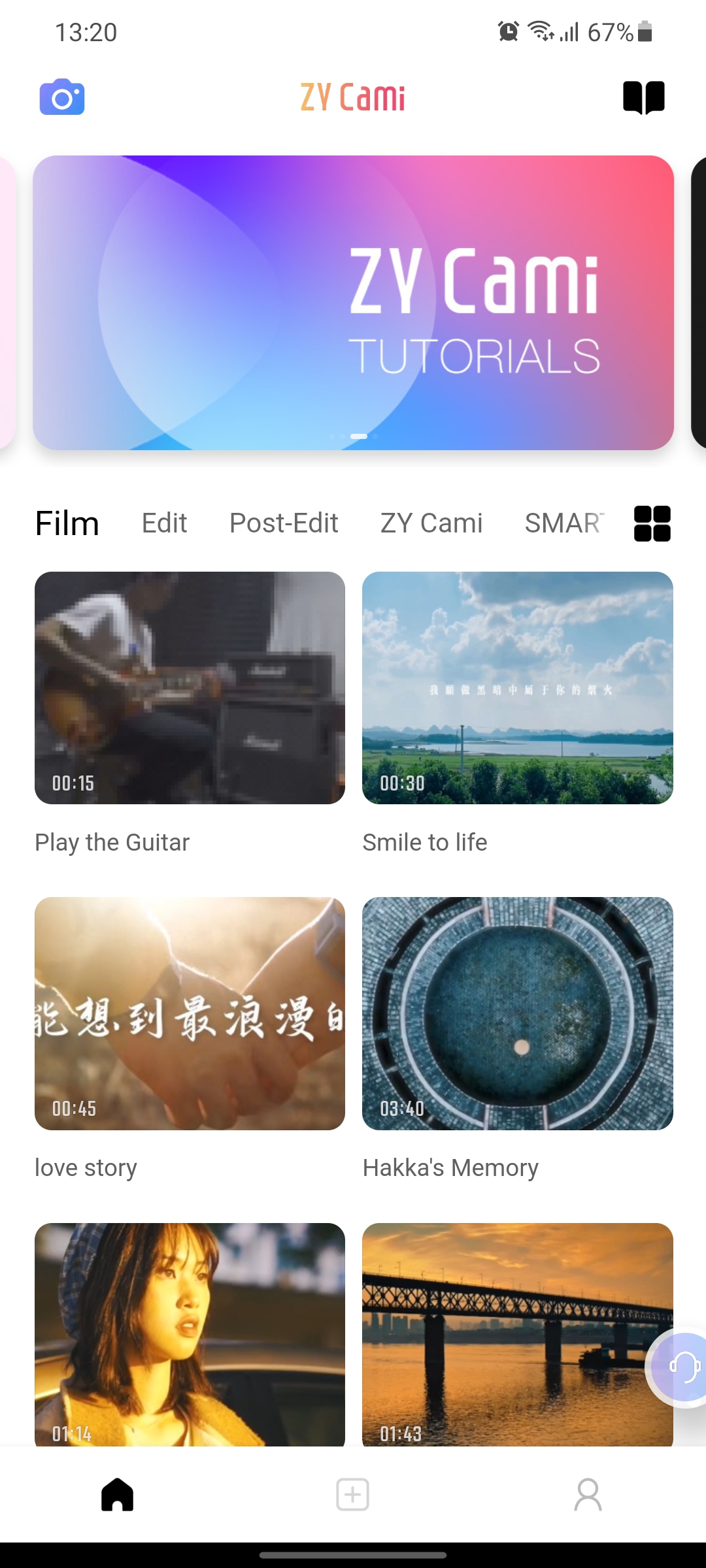















The second part of the application is the shooting itself.Shooting modes are switched as in a standard smartphone camera application. There is a standard set of photos, videos, panoramas and Timelapse, Hyperlapse. Among the unusual ones is Dolly Zoom, also known as the Hitchcock effect, we have already seen it in DJI OM4. And two more modes - Smart with ready-made templates for creating videos from small pieces with different effects. And AiLive is a live broadcast: there are no services familiar to us. There is no slow motion in the modes.
There are buttons on the screen itself for quick navigationto filters, switching to the front camera, activating gesture control and digital zoom. Unfortunately, the application can only work with the main camera of a smartphone. You won't be able to switch to ultra-wide-angle or telephoto. In any case, in Android smartphones (Samsung Galaxy S21+ and Xiaomi Mi 11 Ultra were used), perhaps the situation with iOS is better. Also on the main screen you can select the resolution and frame rate. The application cannot do 4K 60 fps, although smartphones can do it (and the aforementioned DJI OM4 can do it). Moreover, when switching to 60 fps in FullHD, the application generates an error and, accordingly, does not record video. In the settings drop-down menu you can select white balance (exposure and shutter speed are not adjustable). The settings of the gimbal itself allow you to select the object tracking speed, tracking modes, zoom speed, and joystick sensitivity. There is also an auto-calibration function. Generally speaking, the application is simple and understandable, but it is still incredibly crude, with a bunch of bugs and a bunch of missing functions. We can only hope that they will bring it to mind.


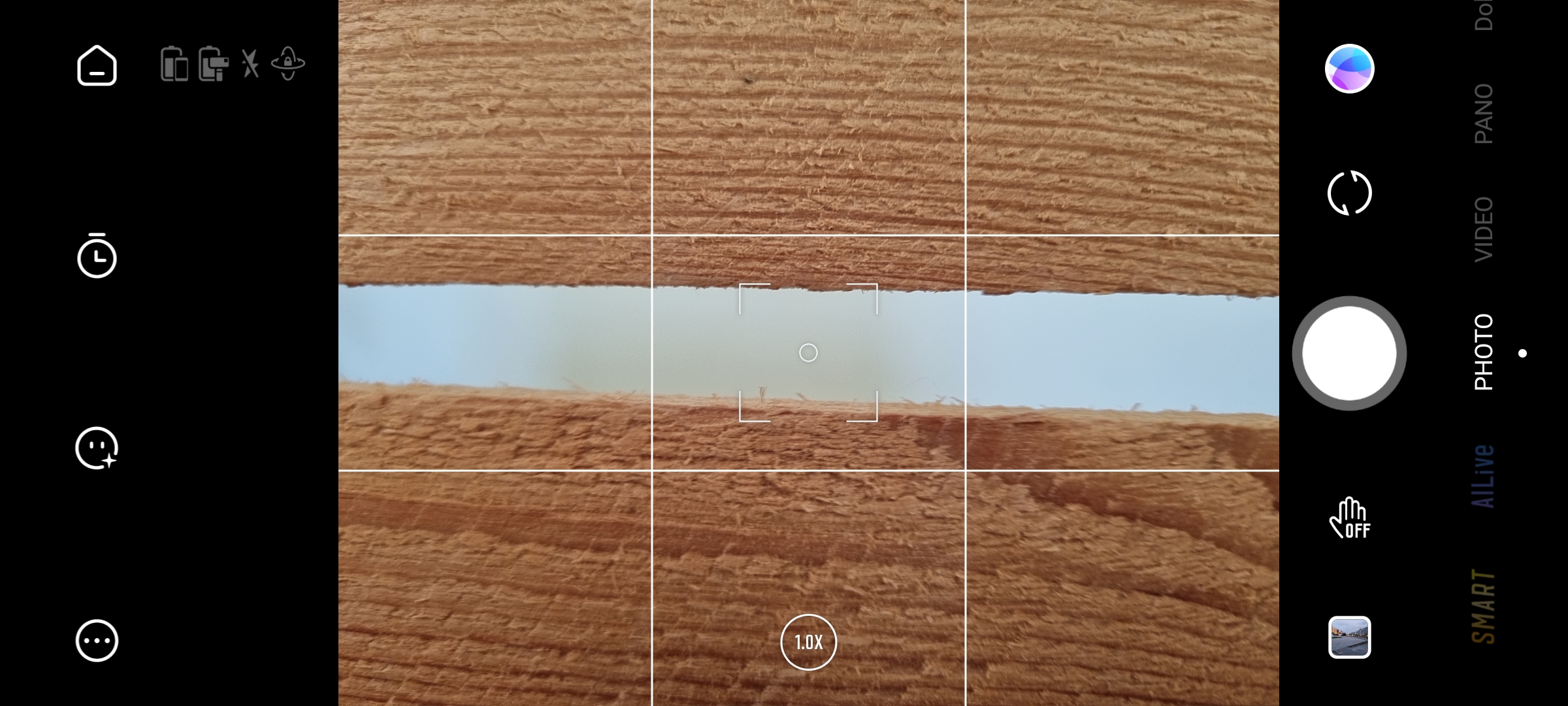




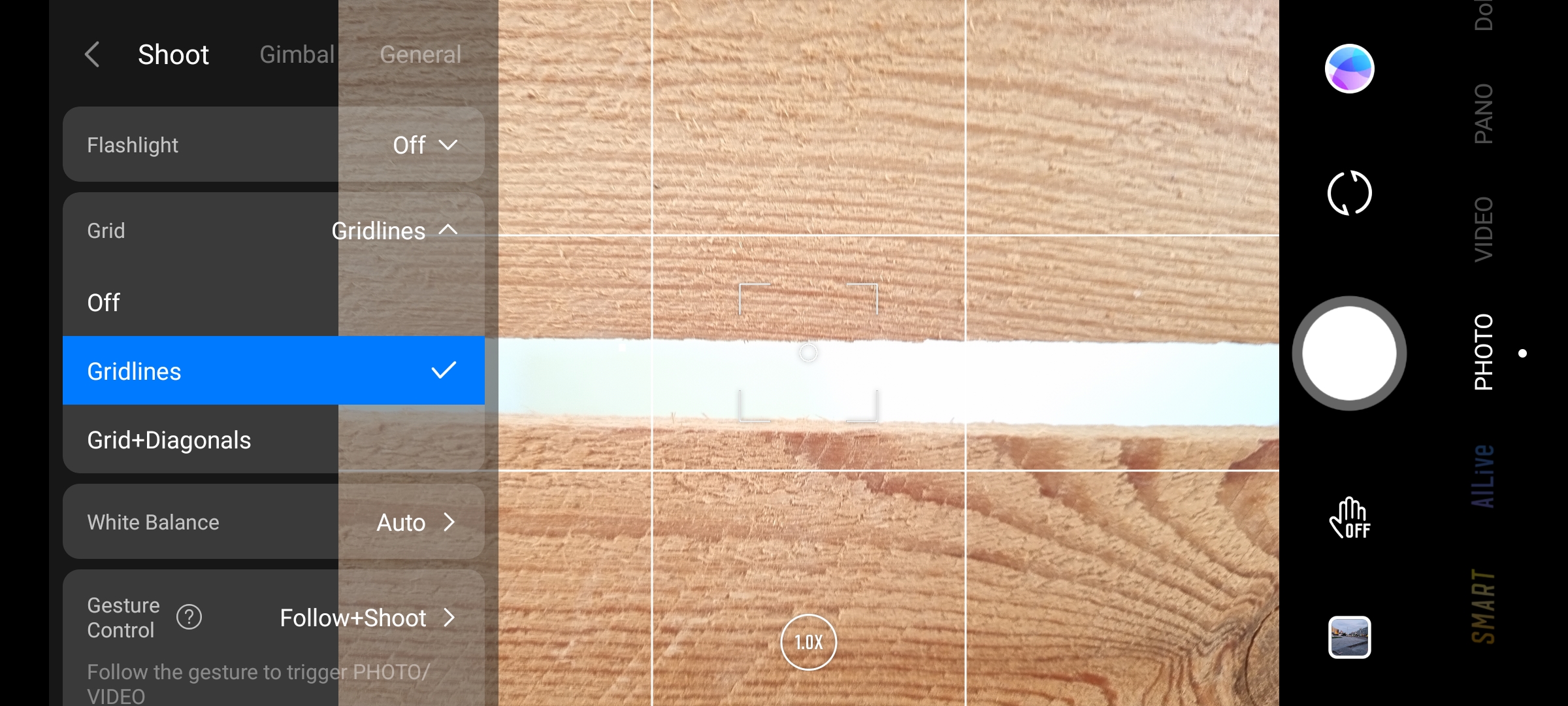



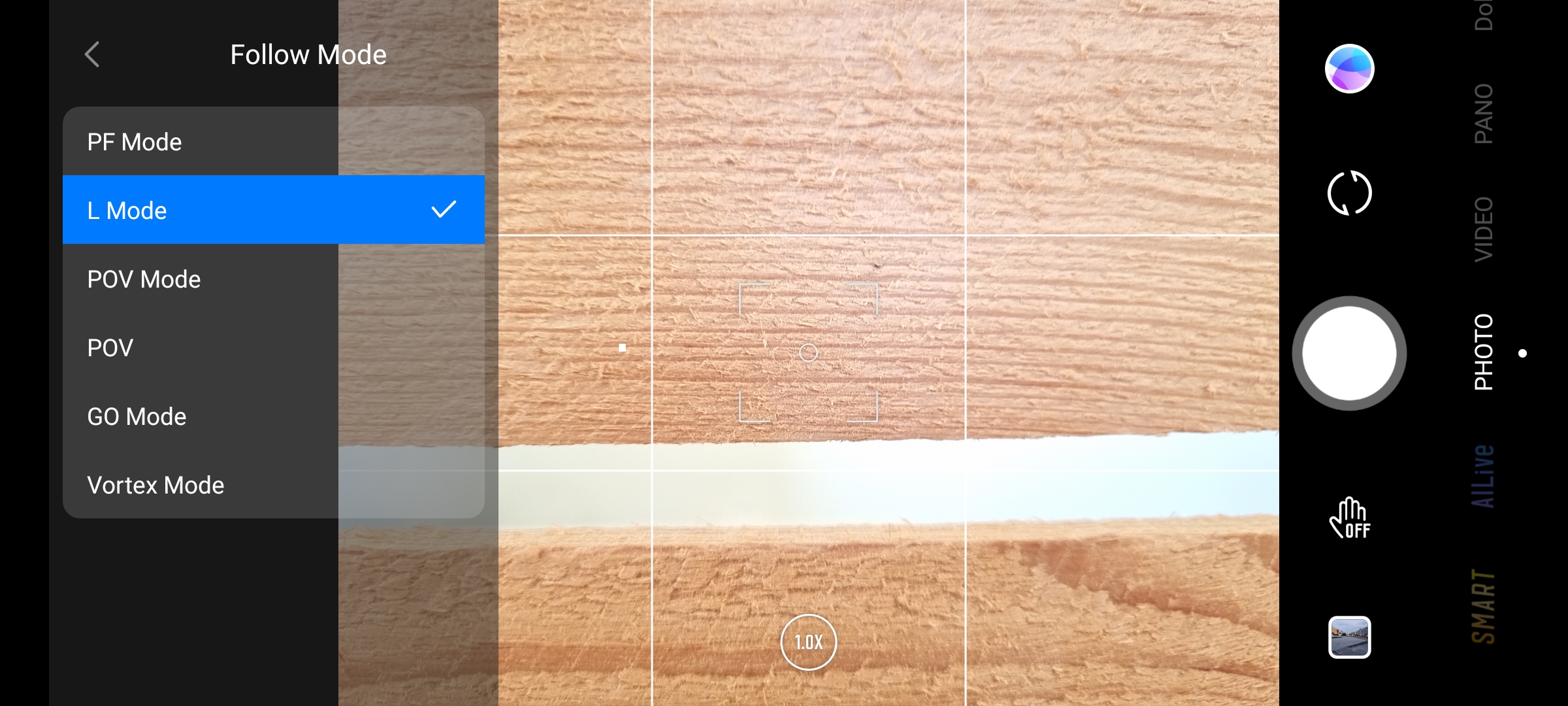

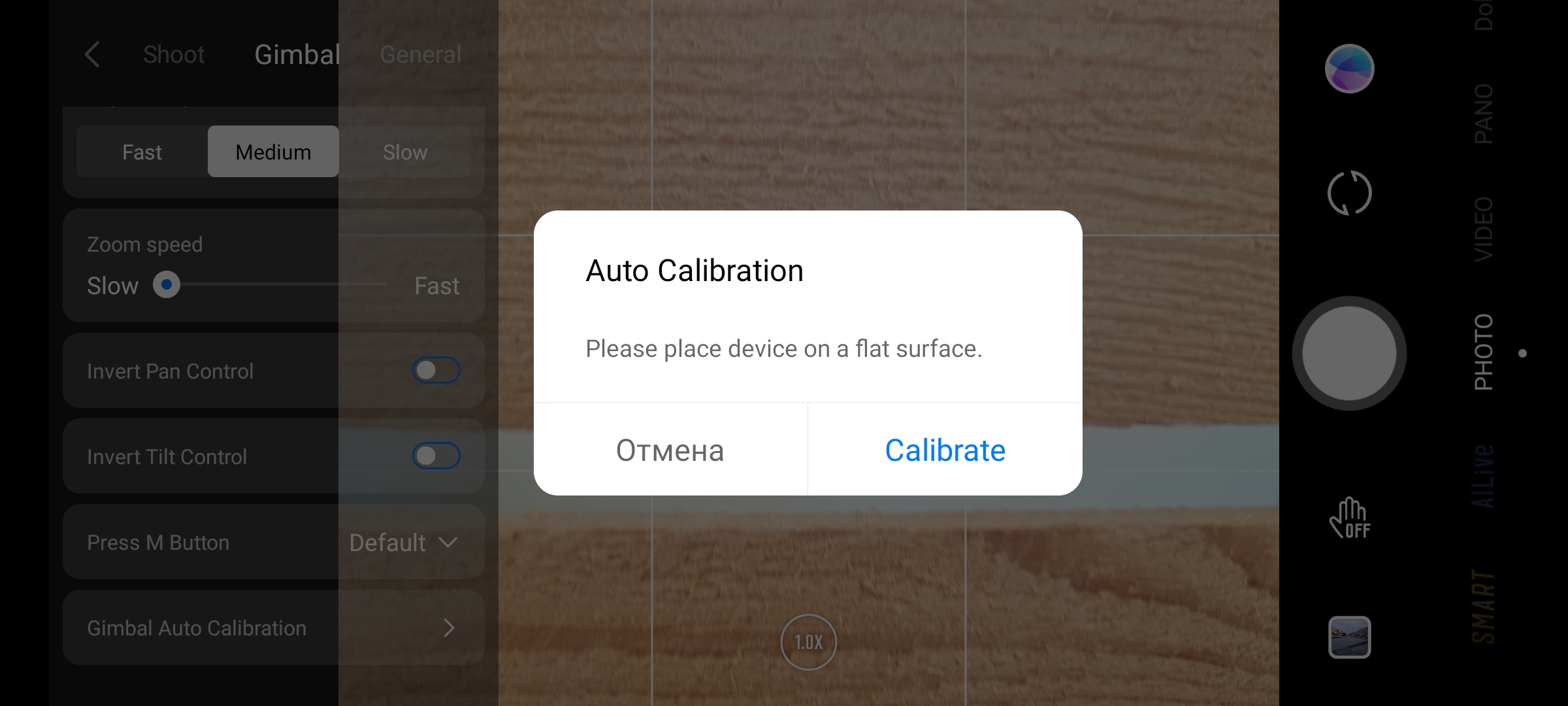
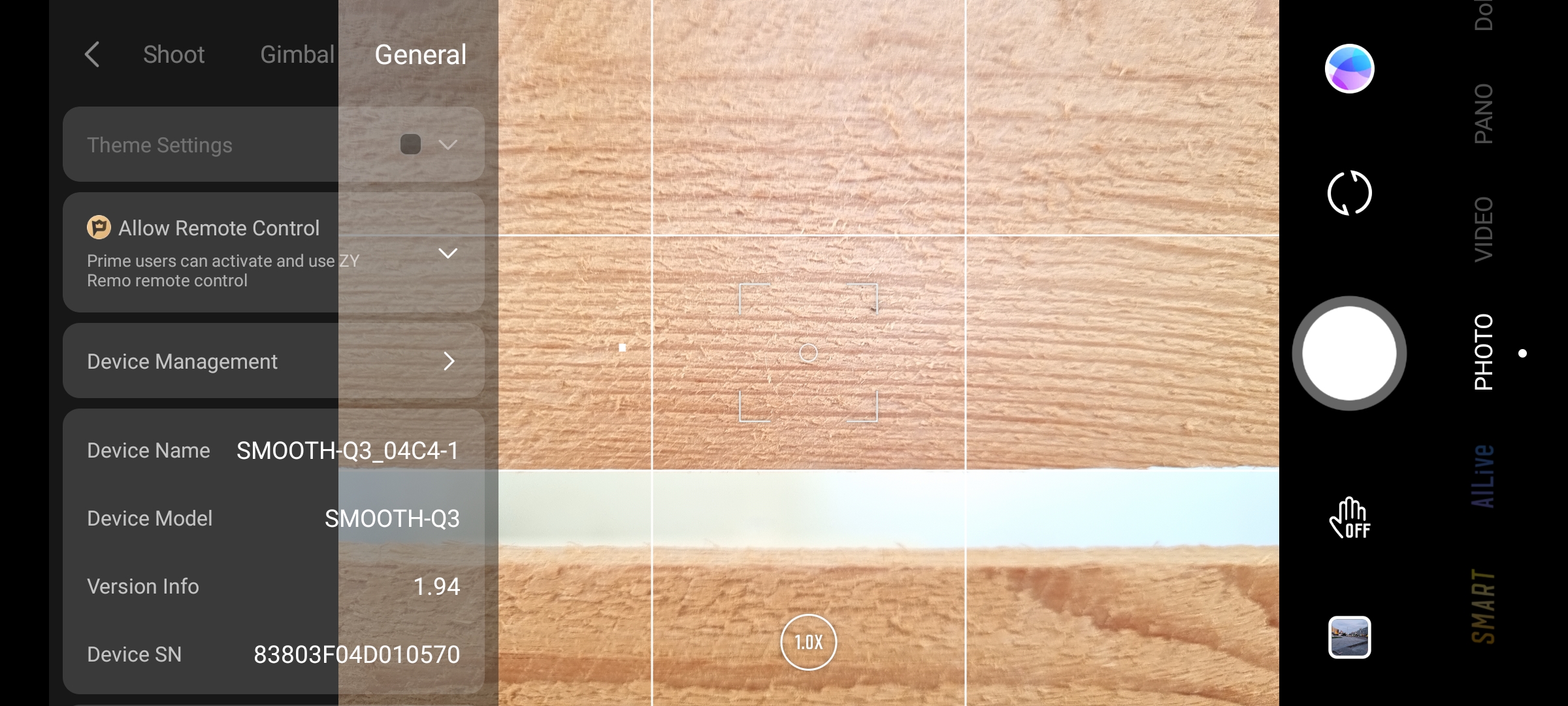
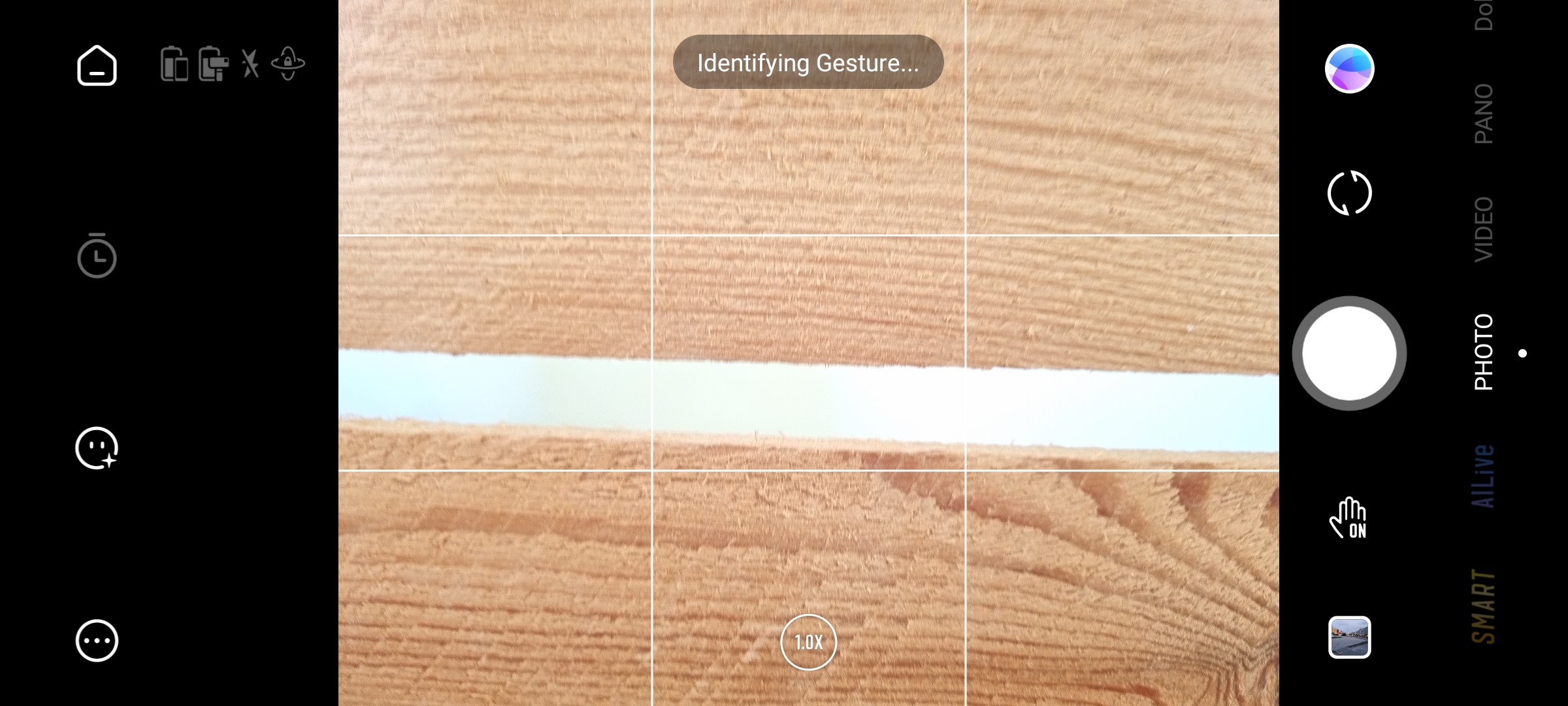




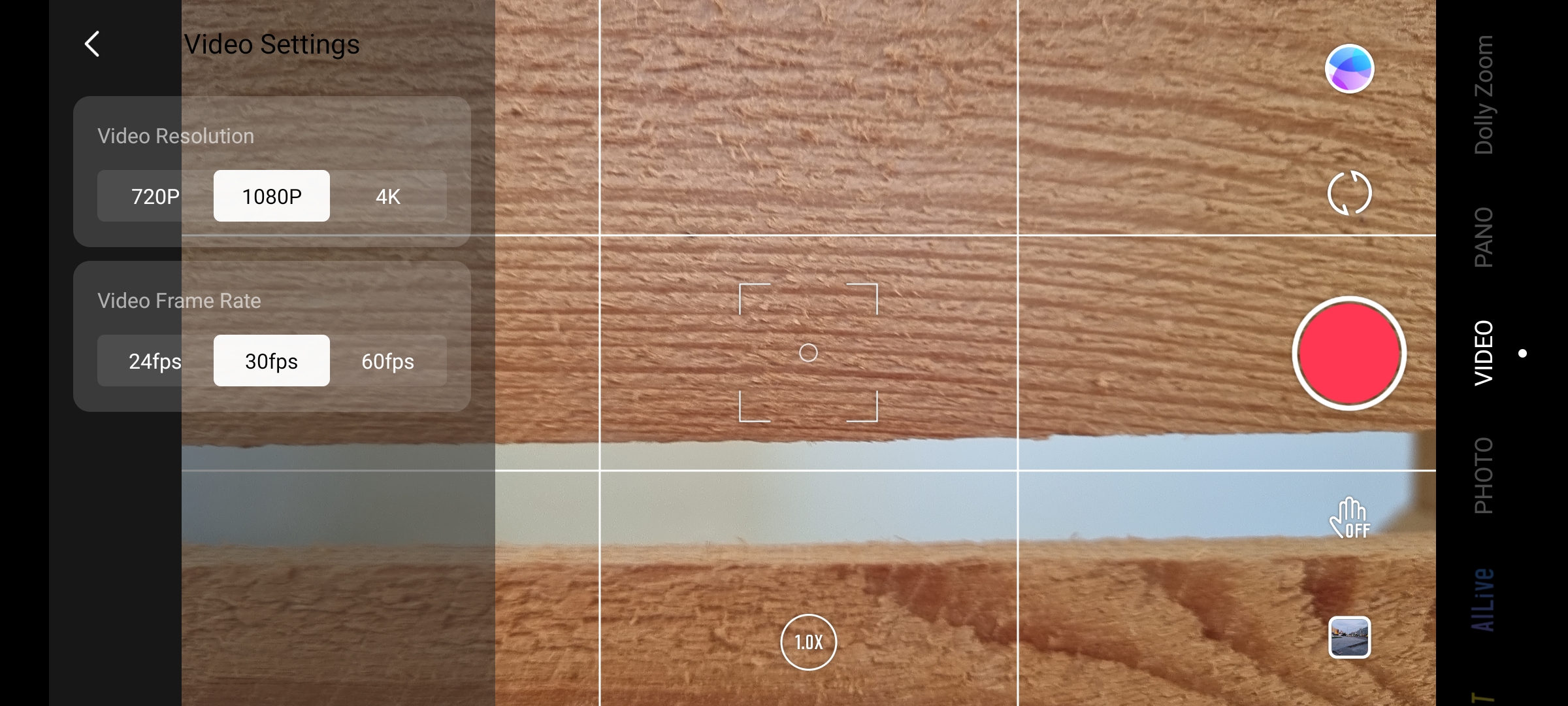

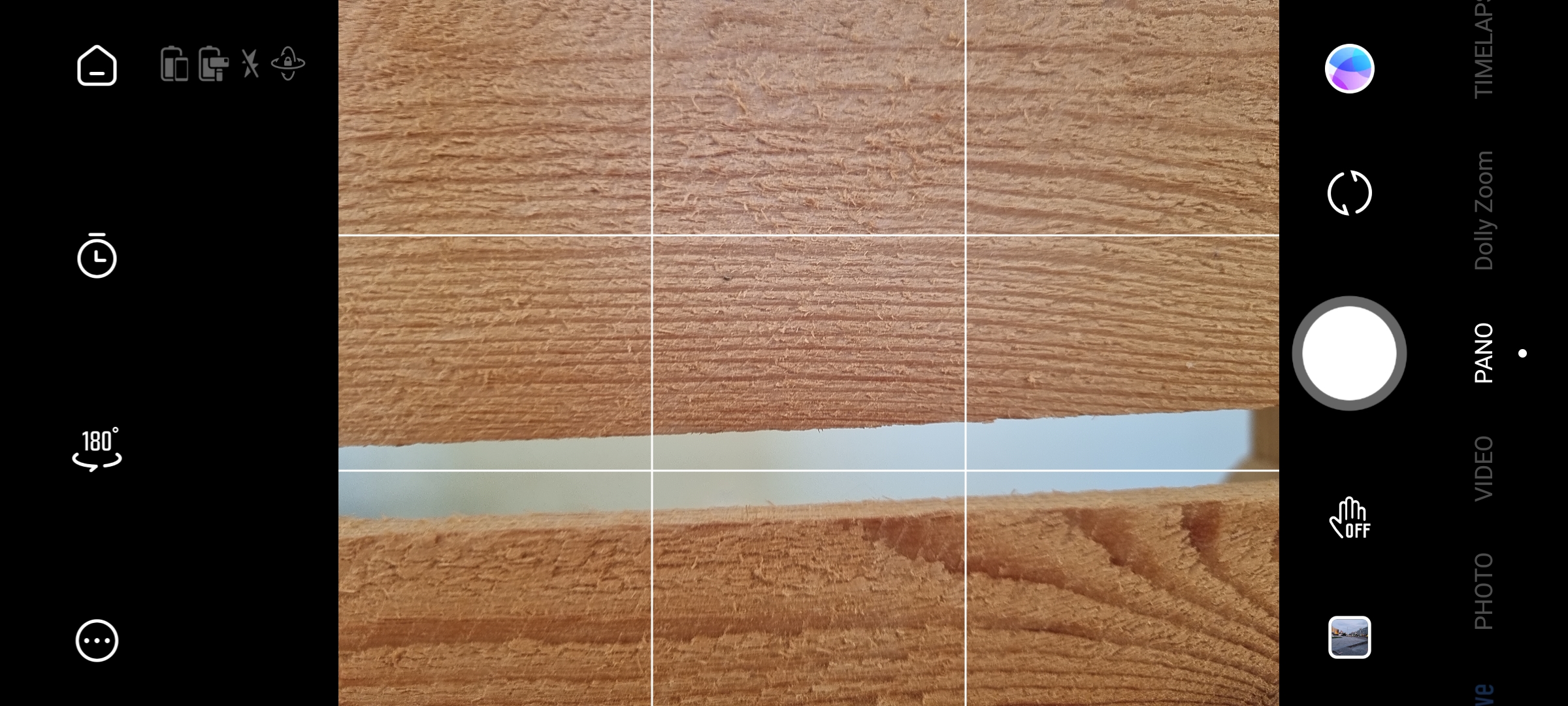
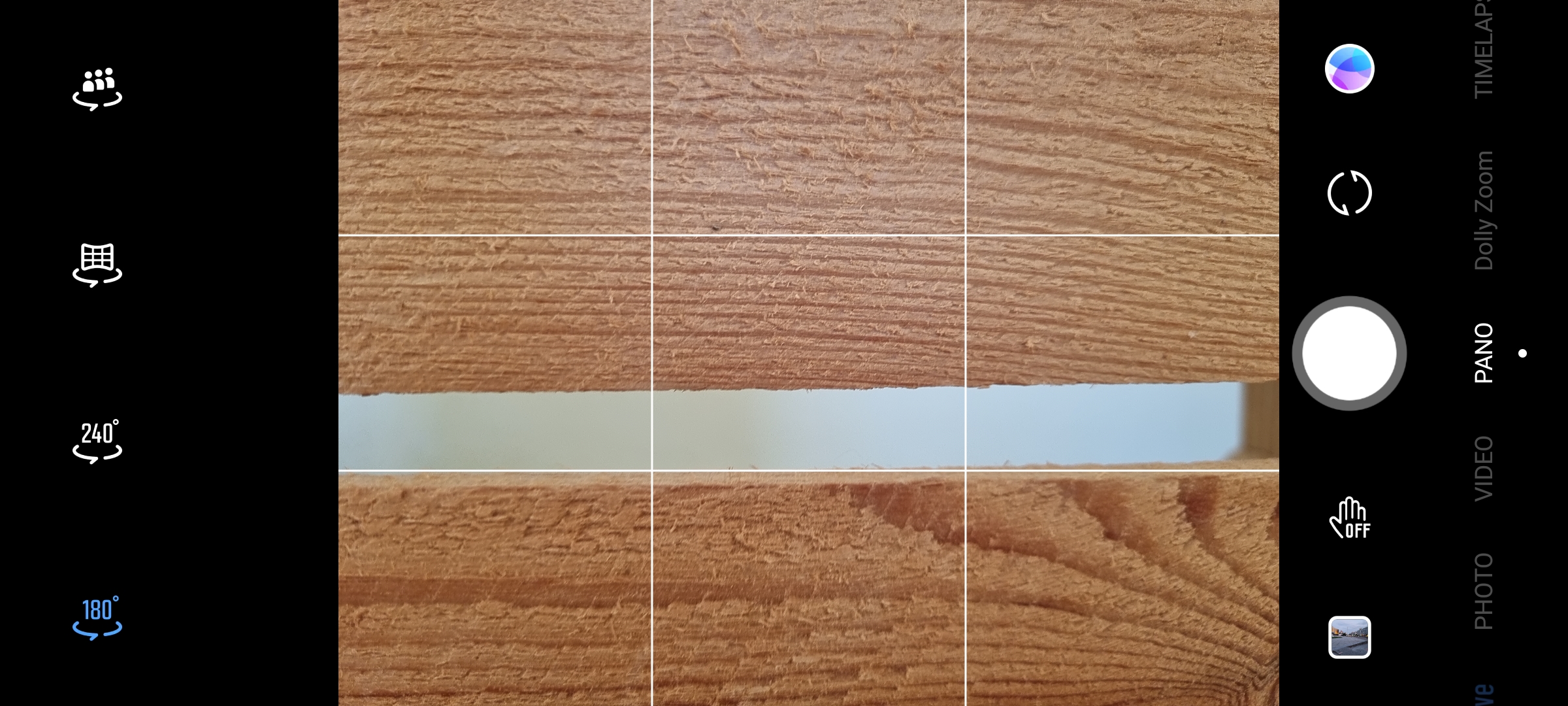






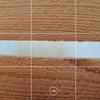

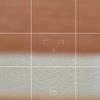





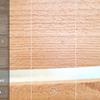







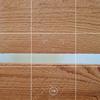
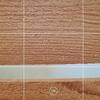



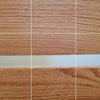



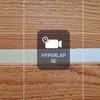
How does he behave in work and shoot?

</ img>
With its main task Zhiyun Smooth Q3copes well. When shooting videos, they turn out to be quite smooth, no shaking or anything else. Also worth noting is the SmartFollow 3.0 object tracking. It is launched either by pressing the front multifunction button, or by selecting the desired object in the viewfinder. It doesn't work perfectly, but it works quite well. Literally once the system missed and switched to another object during shooting.
As for additional shooting modes, noeverything is so good. In Timelapse mode, you can select shooting intervals and duration, as well as several points on the route along which the camera should move. Functionally, everything you need is there. But the result is a little strange. The video was shot from the included tripod, but the picture does not move smoothly along the given route, but rather twitches a little. It’s difficult to say what this is connected with.
Also, some oddities arose with the panoramas. There are several modes including 180°, 240°, clone and 3x3. 180° “glued” Right:

</ img>
But two attempts to shoot 3x3 ended in very strange results. Shooting and gimbal movement was correct though. Probably another bug of the branded application:

</ img>

</ img>


Hyperlapse works quite well:
Dolly Zoom is still working strangely and not as impressive as we would like:
If we talk about physical stabilization,then the Zhiyun Smooth Q3 does its job well. And it doesn't have to be used with a proprietary app. If we talk about additional features and modes, then things are not going well for now: we should wait for updates.
What about autonomy?

</ img>
The stabilizer is powered by a non-removable batteryat 1300 mAh. A full charge takes about 2.5 hours. The company specifies two battery life values. Standard: 7 hours and maximum: 16 hours. In reality, everything very much depends on the operating modes, the smartphone used and the accuracy of the initial balancing. With fairly heavy smartphones, I got about 6 hours.
</ p>In the dry residue. Three things to know about Zhiyun Smooth Q3.
- Zhiyun Smooth Q3 is compatible with most modern smartphones of all sizes.
- Has a convenient folding design and compact size.
- To use additional functionality, you must use a proprietary application, which is still very crude.
Zhiyun Smooth Q3 Specifications
Housing
Unfolded: 279x127x90 mm, folded: 180x154x45 mm, Weight: 340 g
Compatible smartphone weight
280 g
Compatible Smartphone Width
55-90 mm
Battery
1300 mAh
Stabilizer charging port
USB Type-C
Tripod thread
1/4 inch
Wireless connection
Bluetooth 4.2
Angles of rotation
Pan: 300°, Rotate: – 170° – 170°, Tilt: -260°– 80°
application
ZY Cami
Tripod dimensions
138x32x32 mm, weight 72 g
For those that want to know more:
- DJI OM4 (Osmo Mobile 4) Review: The Most Advanced Smartphone Gimbal
- DJI Osmo Pocket Gimbal Review: A Pleasure You Can Buy
- FeiyuTech Vimble 2 Review: Selfie Stick with Motor
- FeiyuTech G6 Plus review: universal handheld gimbal for cameras and smartphones (video)
- DJI OSMO Mobile review: arm straightener
- A quick tour of the DJI Osmo handheld gimbal with 4K camera